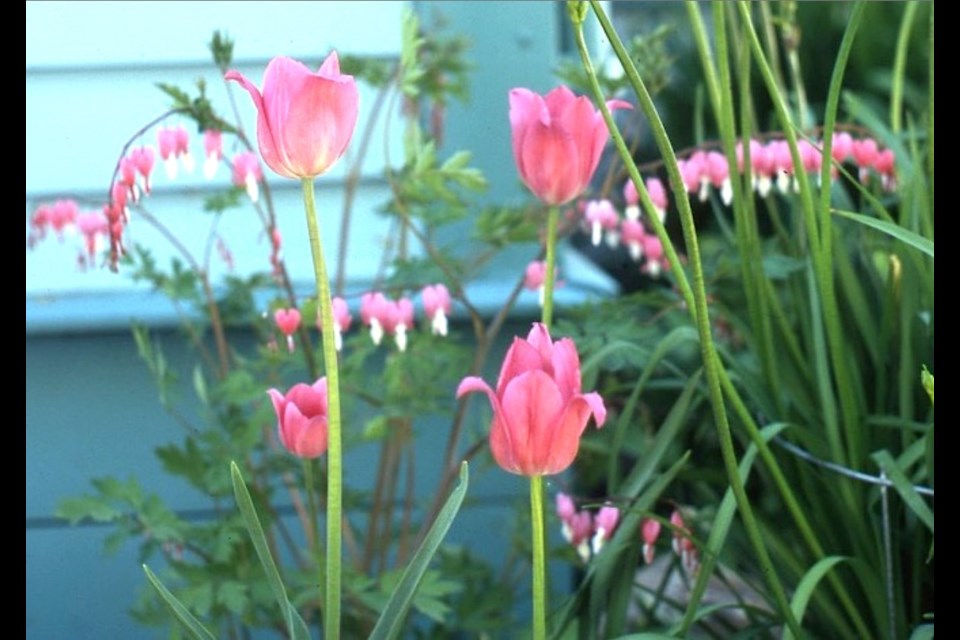When new to gardening, many of us begin by acquiring perennial plants from our mother’s garden, a friend or neighbour, a horticultural society or garden club plant exchange or a nursery. Generally, these plants will be hardy and survive tough prairie winters.
Our initial object may be simply to fill the available space within a bed or border. While we will probably pay attention to a perennial’s height, we may not initially be as aware of its season of bloom or precise colour.
At first, we get to know our plants – their growth habit, where they thrive (or not) and other characteristics. But few of us decide on a colour scheme when staring out. However, sooner or later, we begin to pay attention to colour. We may decide on an overall colour scheme for one portion of a border or a bed, then add plants with only those colours that harmonize with it. One approach to introducing a colour scheme is to use a colour echo.
So, what is a colour echo? Broadly speaking, it’s a colour in one plant repeated in a nearby plant. The idea of colour echoes was popularized by Pamela Harper, an American garden writer, who wrote Colour Echoes in 1994. “Too much sameness is boring, too much diversity bewildering, and colour echoes…although united by similarities, also involve contrast… in colour, form or texture.” They are a means of creating unity, serenity, interest and charm within a garden.
In practice, the echo can consist of two tones (a colour to which black or white has been added) of the same colour. One of the colours in a bi-colour or multi-coloured flower or leaf may be repeated in adjacent foliage or flowers. Often, the colour of two adjacent plants is the same, but the form or texture of their flower or foliage is very different. The colour of foliage is as important flower colour, but we seldom give it the same attention. Colour echoes can be used in multi-coloured (polychromatic) borders without major changes to the existing plants. These possibilities increase considerably in a mixed border that includes annuals, biennials, vines and shrubs as well as perennials.
Occasionally, we may see a perennial quite a distance away that would be a perfect colour echo for another and move it closer. As Helen Dillon, an Irish garden writer, wrote, “If you come to colour late in your gardening life, you will do a lot of transplanting…”
Some examples of colour echoes:
The dark purple falls of a two-toned bearded iris echo the colour of a purple clustered bellflower.
Hosta foliage with a white margin and the white fruit of dogbane.
Puschkinia flowers and those of Siberian squill.
The yellow foliage of Veronica ‘Trehane’ with that of a yellow and green hosta.
The yellow flowers of Trollius globe flower with the yellow margin of hosta foliage.
A pink tulip and the pink of a bleeding heart present the same colour but a contrast of foliage.
Echoes can also come from the hardscape. The colour in your house, garage, shutters, fences, gates, garden furniture or even a bird house can be repeated in nearby flowers. Many of the pink flowers in Claude Monet’s famous garden in Giverny, France, were a colour echo of his pink house.
Most echoes are found in close proximity, next to each other or along a path within a few feet. But in more expansive landscapes they can be viewed across a distance such as larger groupings of Bergenia with tulips of the same hue in spring.
Combinations among foliage plants are more long-lasting through the growing season. There may be disappointment if two flowers in a planned colour echo fails to bloom at the same time in a particular year. It’s safer to pair a foliage colour with those of a flower. The foliage will be there whenever the flower opens.
Often, we simply develop a border and are pleasantly surprised when an unintentional but pleasing colour echo appears.
Sara Williams is the author and coauthor of many books including Creating the Prairie Xeriscape, Gardening Naturally with Hugh Skinner and, with Bob Bors, the recently published Growing Fruit in Northern Gardens. She continues to give workshops on a wide range of gardening topics throughout the prairies.
This column is provided courtesy of the Saskatchewan Perennial Society (SPS; [email protected] ). Check our website (www.saskperennial.ca) or Facebook page (www.facebook.com/saskperennial) for a list of upcoming gardening events




